So we wake up in a small village just behind the border in a country we actually never planned to visit: Nepal. Just a few months ago an earthquake has hit parts of the country and we have been told several times not to visit it now, since they still had to rebuild their houses and tourists were of little help during that process.
Only after we met Hans from Belgium in Bishkek we decided to cross through Nepal. He said he crossed Nepal from east to west on a good road and didn’t see much effects of the earthquake. Cora anyway wanted to avoid the busy roads in northern India of which we have been warned so many times as well. With a visa-on-arrival policy cycling through Nepal was an easy decision.
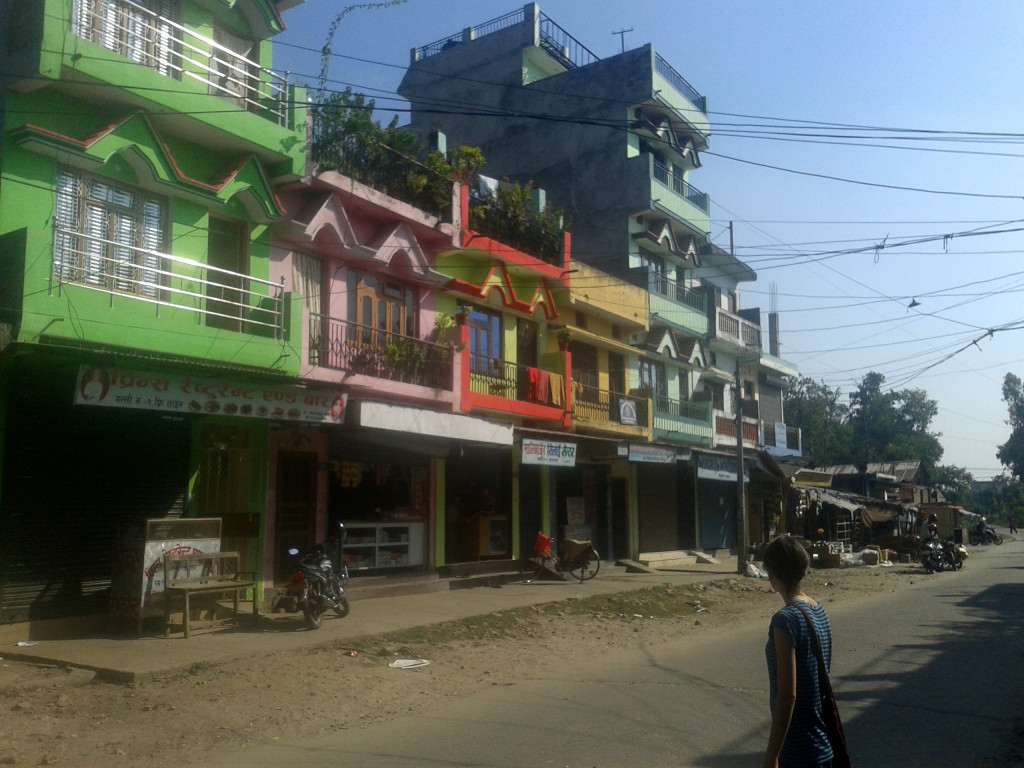
The border village Bhimdatta is just another small village alongside a main road. Like so many villages in India, but since we are now in Nepal we see less people and little traffic. The road is good and we soon cycle east towards Kathmandu. The region is absolutely flat and locals often start an interview while cycling besides us. Usually the fist question is „where are you going?“. We actually don’t really know, because we entered Nepal totally unprepared. We only know that we will sooner or later end up in Kathmandu. So „Kathmandu“ is our answer. The cyclists then usually accelerate, because you need to know that the Nepali are very competitive people. You cannot overtake them. They will overtake you. Again and again.
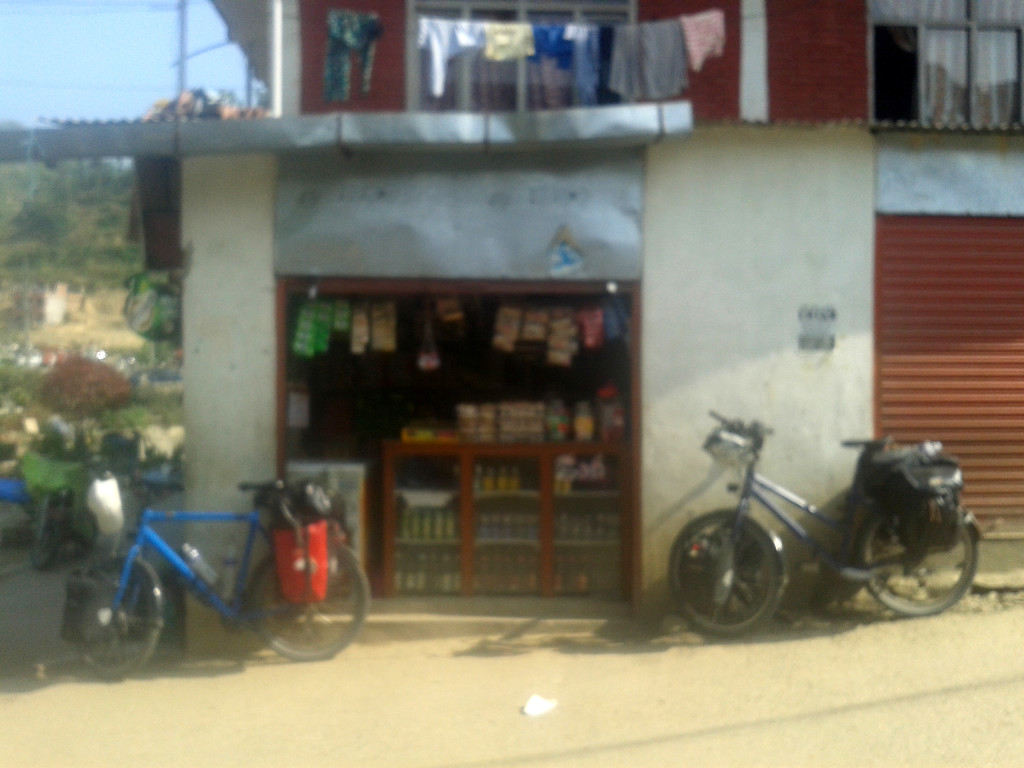
We have rarely an internet connection even though we still spend every night in a hotel. Sometimes we can browse the internet slowly and start to get information on what route to take. We never really thought about heading into the mountains of Nepal, since we assumed it will either be too cold to go there or only on trekking paths, where we cannot cycle. But reading about the Everest Base Camp trek I really get excited to visit this giant and October and November are the best month to do so. The more we read, the more we want to go into the mountains. After all Nepal is the country to do this. But how?
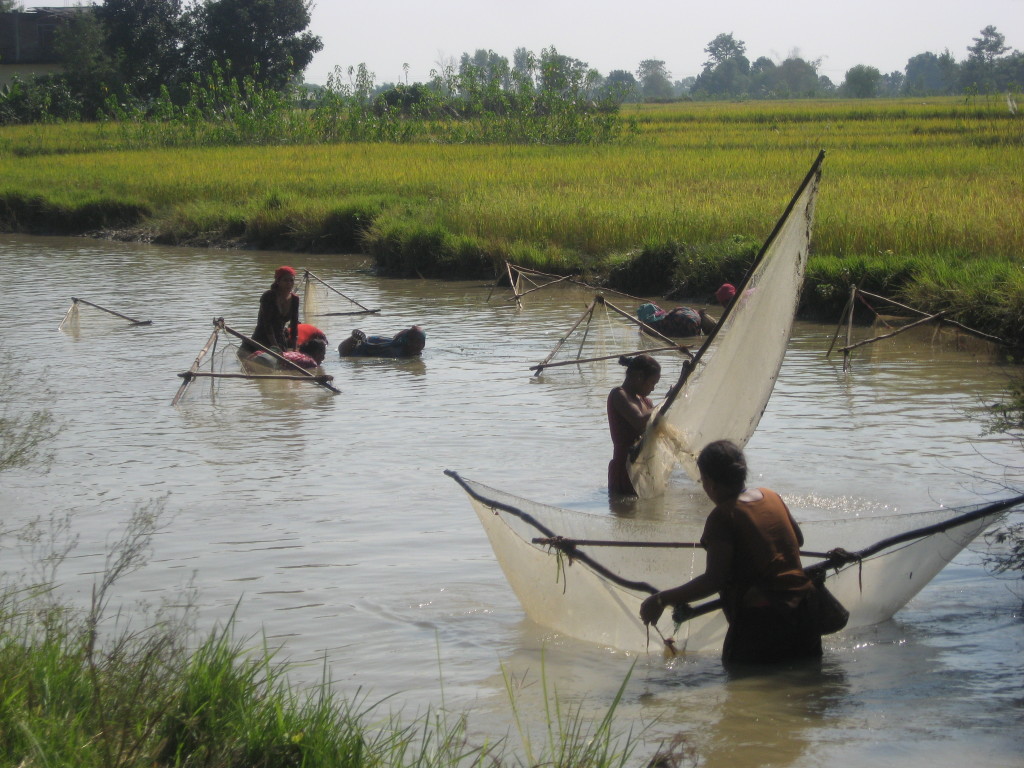
We are still hundreds of kilometers from Kathmandu and cycle through the so called Terai: The lowlands of Nepal. Only a few really small villages and military checkpoints interrupt the road through the jungle. From time to time we hear screams and find hundreds of monkeys sitting on the trees and running on the ground. Also a lot of deer is hiding in the dense forest. Big butterflies are following us for a while before they land on a flower. The whole day we hear the typical noise of the jungle. I’m sure you know what I mean. Just this sound that proofs a lot of animals are living there. This constant sound of life.
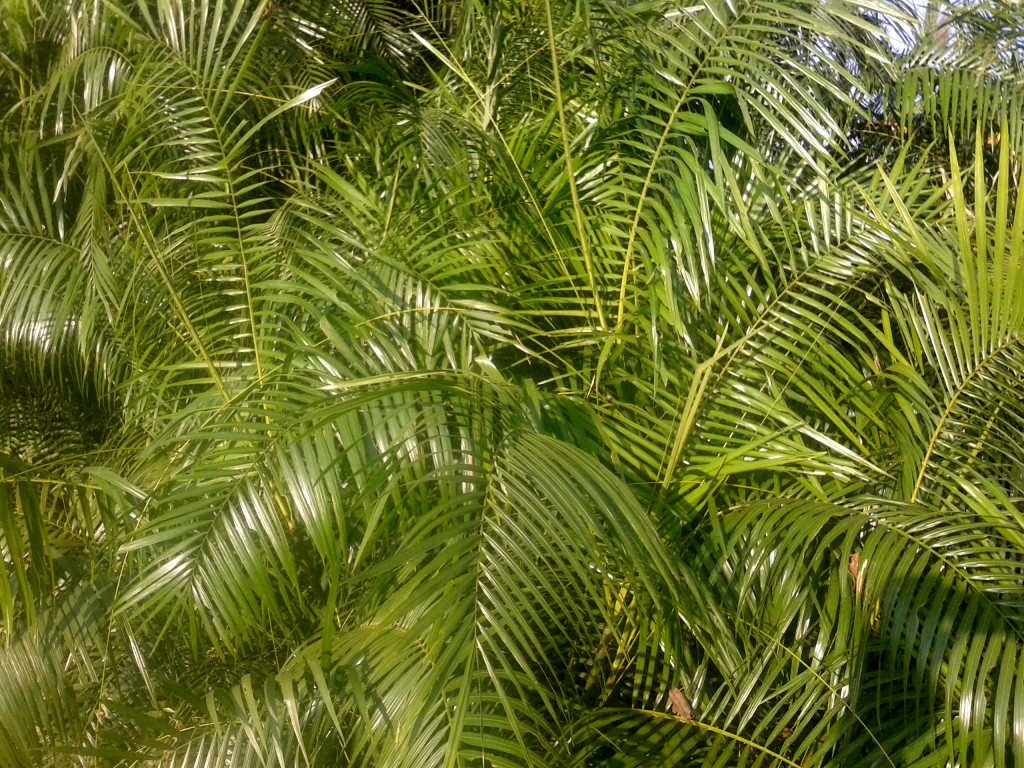
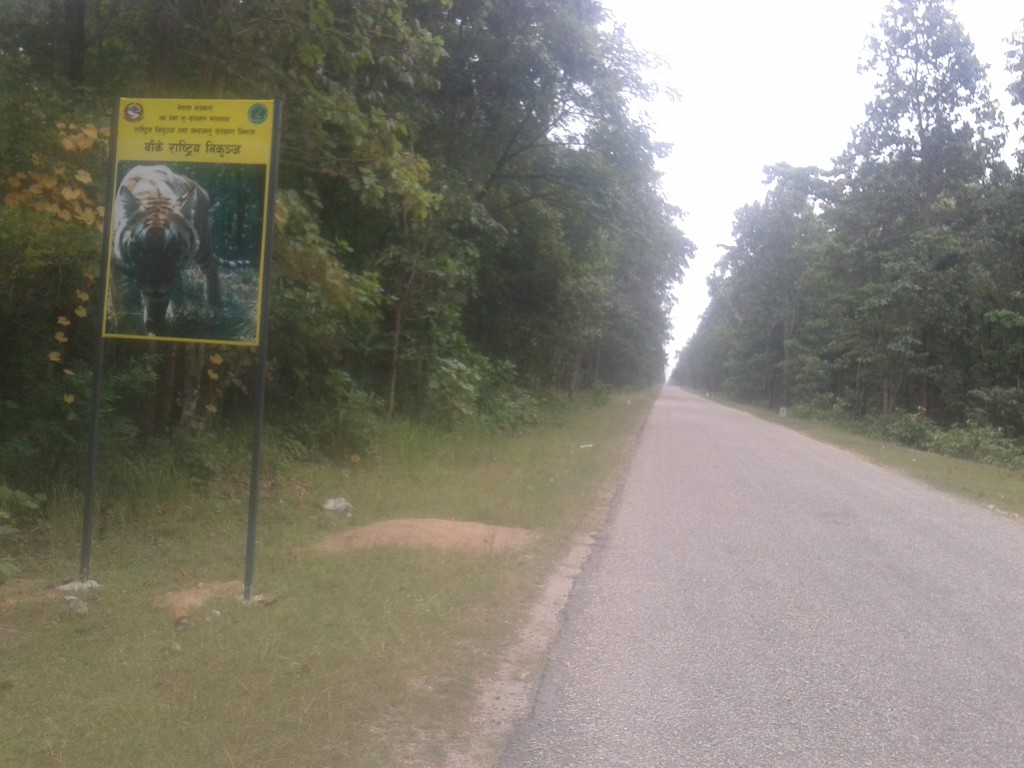
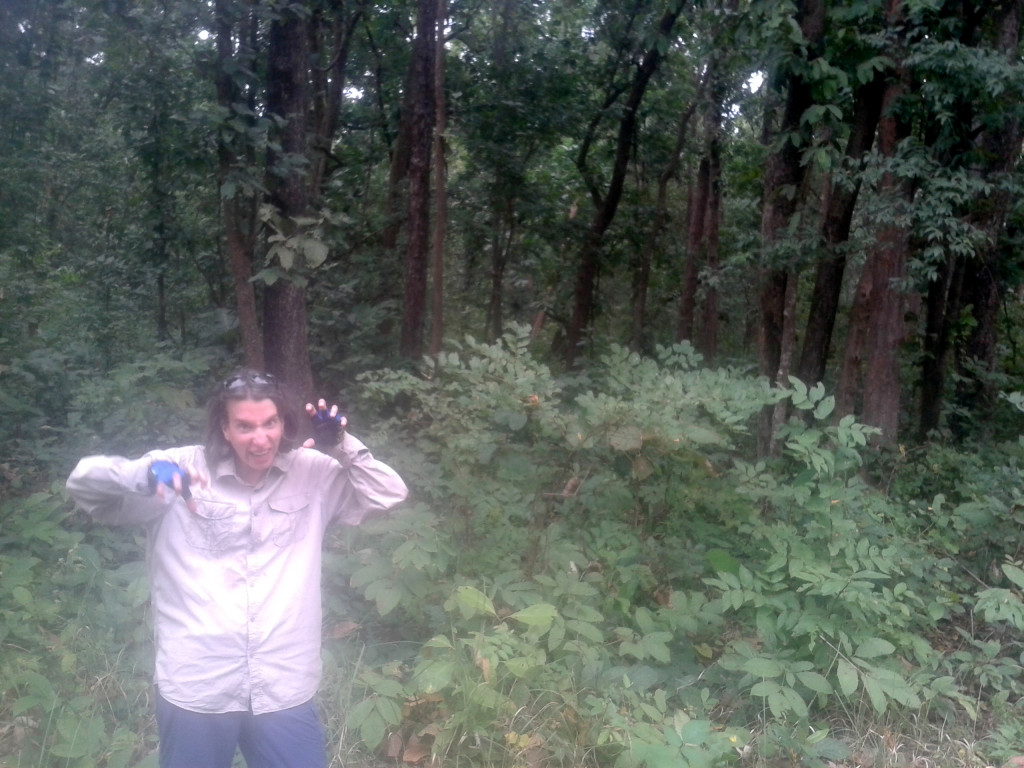
In the evenings we sleep in very simple guesthouses or home stays, sometimes as cheap as 200 Rupees (around 2 Euros) and always get dinner. Dal Bhat is probably the most common dish you get. It is a lot of rice with lentils and different vegetables as side dish. The good thing about Dal Bhat is you are always asked if you want more. It seems like this is only the case with Dal Bhat. There is always more until you are full. So Dal Bhat soon becomes my favorite dish. But also the donuts, Samosa and Pakoda are delicious and available everywhere and anytime. It is an easy part of our journey. Everything is there when you need it. Only the humidity and the still high temperatures remind us from time to time of the cooler mountains we wanted to visit.
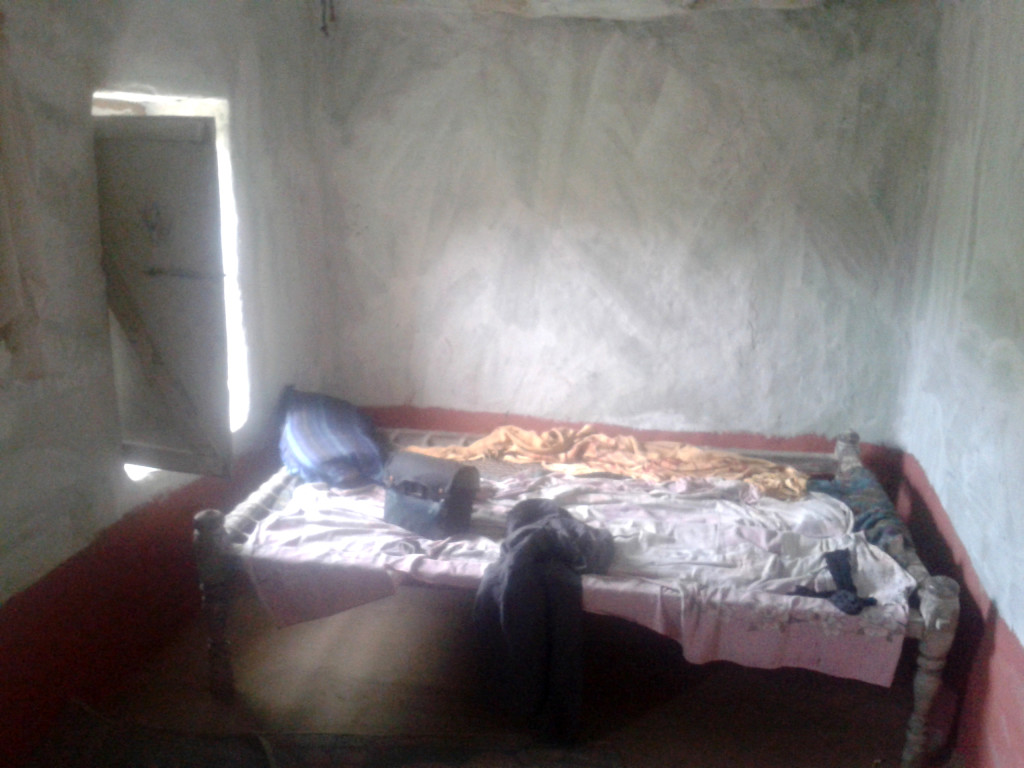
The Everest Base Camp would be great of course and it is absolutely doable. But we neither have proper mountain shoes, nor do we even have a rucksack. Buying a rucksack is very easy and cheap in Nepal, but buying new shoes just makes no sense. You definitely don’t want to spend the first 100 km in your new trekking boots walking to Mount Everest Base Camp. We think back and forth and while we are now heading towards Pokhara we consider doing some easy trekking around this little town next to a lake. Also we realize that there is actually a border crossing from Sikkim (India) to Tibet. With this in mind we slowly move into the mountains towards Pokhara.
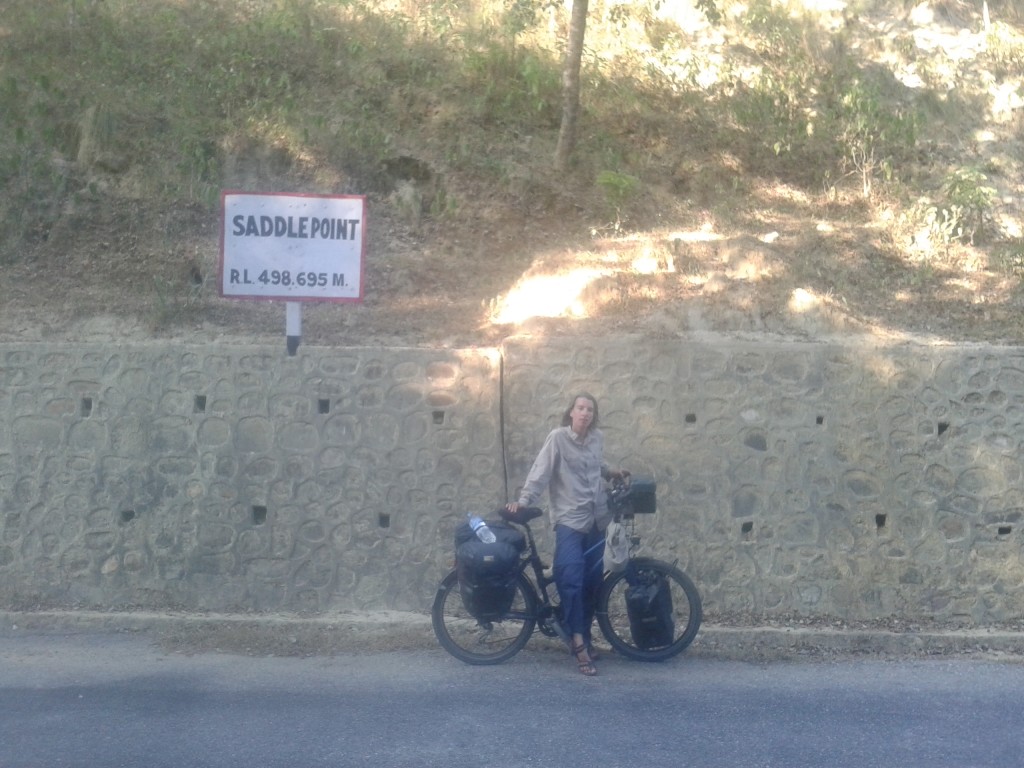
Just two days before we arrive in Pokhara we meet Max from Austria. He is a pretty experienced traveler, who is currently on just another cycling trip. This time he started in Japan, then went to Russia, where most of his stuff got stolen. He continued all the way from Russia through Kazakhstan to Bishkek and finally – like us – took the plane to Delhi. I soon wonder, what got stolen from him, since his bicycle seems still pretty overloaded. He has a bag on his steering bar, two front panniers, two rear panniers. So far so good, but he also has a trailer attached to his rear wheel and as if that wasn’t enough a rucksack on his back. He carries still more than 100 kg. He explains that he started with more than 200 kg. I’ll tell you why: This guy just decided that it would be great to do some canoeing on Lake Baikal in Russia. So he just put a whole foldable canoe on his trailer. And since climbing is also a lot of fun, he also carries his complete climbing and hiking gear. Seems like someone had difficulties to sort out some priorities, but honestly I am impressed. And actually he got most of his stolen stuff back, but several parts were damaged. The thieves apparently had no idea what to do with a foldable canoe and an omnifuel camping burner and just threw it away, after they tried to „open“ it with a knife. Max found them and sent most off it back to Austria.
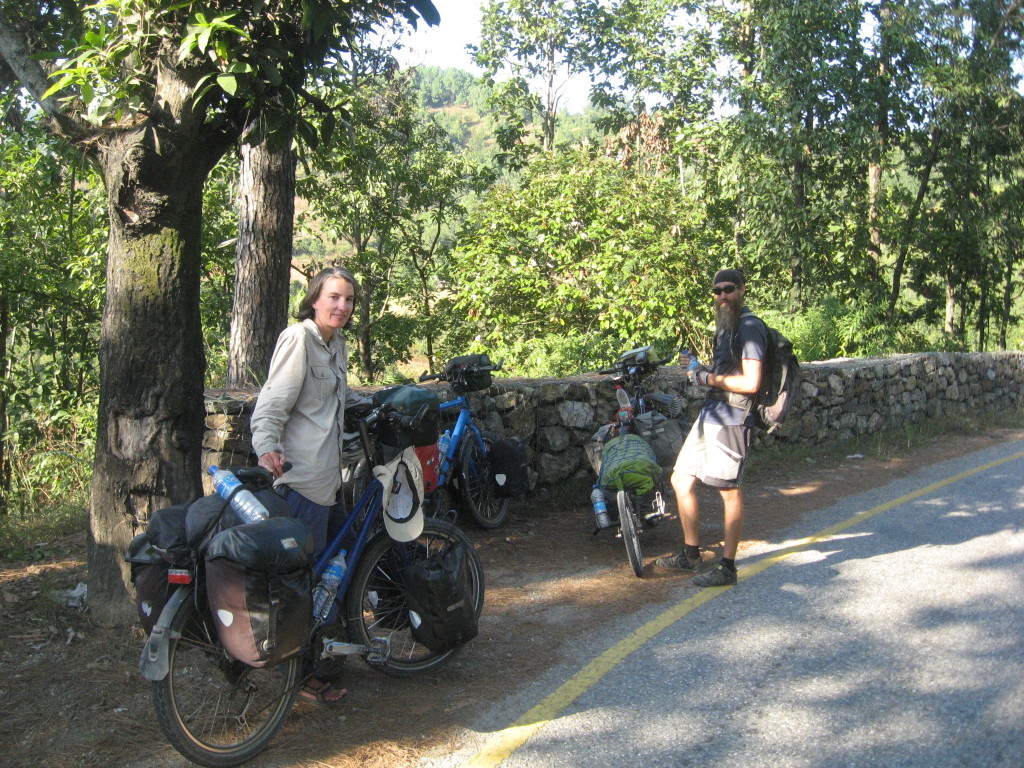
After all these peaceful days cycling from village to village we finally arrive in Pokhara. Pokhara actually was also not on our route, but several locals recommended it and we saw impressive pictures of it hanging on the wall in a lot of restaurants along the way. While Pokhara in fact has a lot to offer, it has not much to do with Nepal. Let me explain:
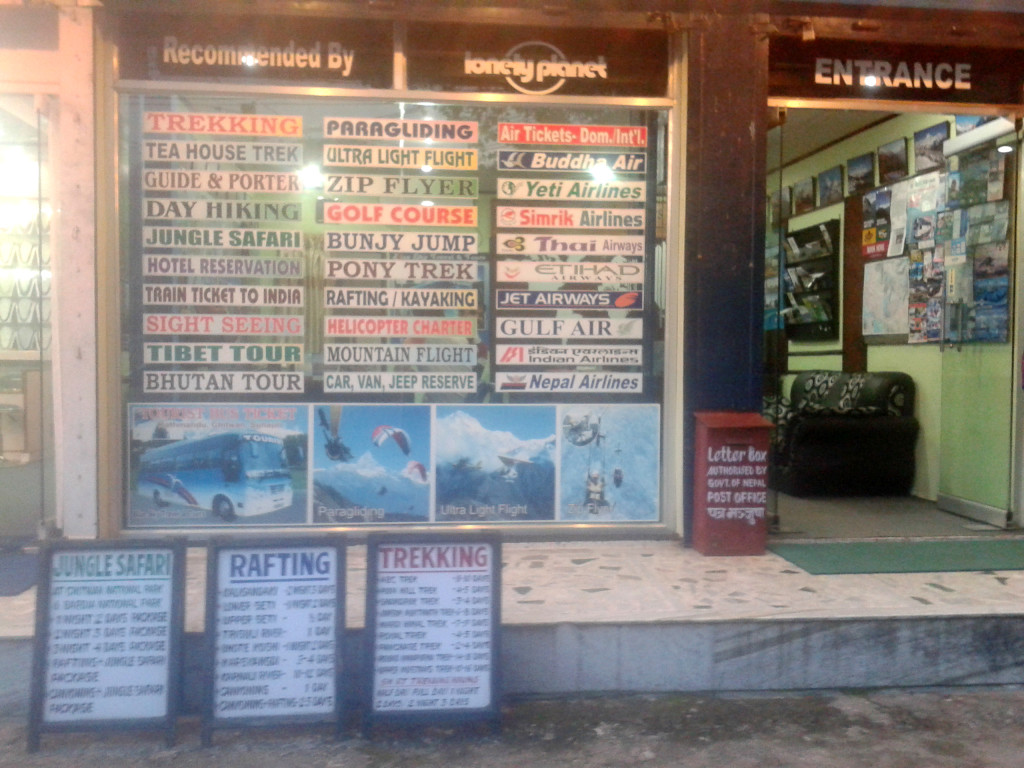
What you usually do in Pokhara is to wonder what you want to do in the short time you spend here. The offers are plenty, the possibilities infinite. And the sky is not the limit. Just go for a hike in the mountains, then rent a mountain bike back to Pokhara. After that – just so your muscles can relax – go for a tandem flight with a paraglider, but don’t forget to book the full package including para-hawking. Because your friends already did paragliding, whereas para-hawking is something new. So while you are paragliding, a hawk will land on your arm and you feed him. All is captured with a go pro hero 3 in full HD of course, so you can show off at home. After all the excitement you should go shopping. A new North Face rucksack should be fine. It is only 20 Euro and you can convince yourself that you actually saved money, because you’d pay 20x that much in Europe. Now buy an all original Nepali dream catcher and one of these Che Guevara T-shirts you thought you were too old to wear. Not here. Everybody is like totally individual and living his/her dream, you know, wearing silly pants and hats. Like, if you are a woman don’t hesitate to hook up with a Nepali man. Being a successful western business woman having a 15 years younger European man working as a tea boy in a restaurant probably won’t impress your friends back home, but this Nepali guy….you know….it’s like….an adventure. Great! Because sex tourism is only done by men and happens in Thailand. Now it is time to find your true self doing some yoga, then have a Latte Macchiato in one of the cool bars while listening to Nepali folklore singer Bob Marley. On your last day in Pokhara consider getting a tattoo. Maybe a mandala with something like „not all who wander are lost“ written below it – in Sanskrit. And before you finally leave your shoes in Pokhara and walk barefoot to the airport while playing with your brand new dreadlocks and your tongue piercing, don’t miss to write something inspirational on the bathroom wall of your cheap guesthouse:
Pleasure is a sign of personality incompleteness
Change is the only constant.(written on the bathroom wall in our guesthouse)
Alright, so after 48 hours in this touristic melting pot I slowly regain my sarcasm-free consciousness and begin to enjoy this town. It definitely is beautiful here, with lovely bars and good food. You get everything you want. The countless German Bakeries provide us with cheese cake and even apple crumble. We almost forget we are in Nepal. It feels more like Amsterdam or on a German Christmas market if you consider all the organic food, handmade yak-wool scarfs and hemp shops.
We feel totally below average on an international coolness scale, because we don’t go bungee jumping and actually only walk around, enjoy the food and don’t even do the small hike we wanted to do. We hear about a shortage of petrol, because India has blocked all petrol delivery due to some political dispute between the two countries. A lot of tourists have already left Pokhara, because the standards dropped rapidly, since they have to cook with fire wood. So preparing dinner takes longer and not all dishes are available. Getting a Latte Macchiato might even take up to 30 minutes. Of course you don’t have that much time if you don’t want to miss the yoga class.
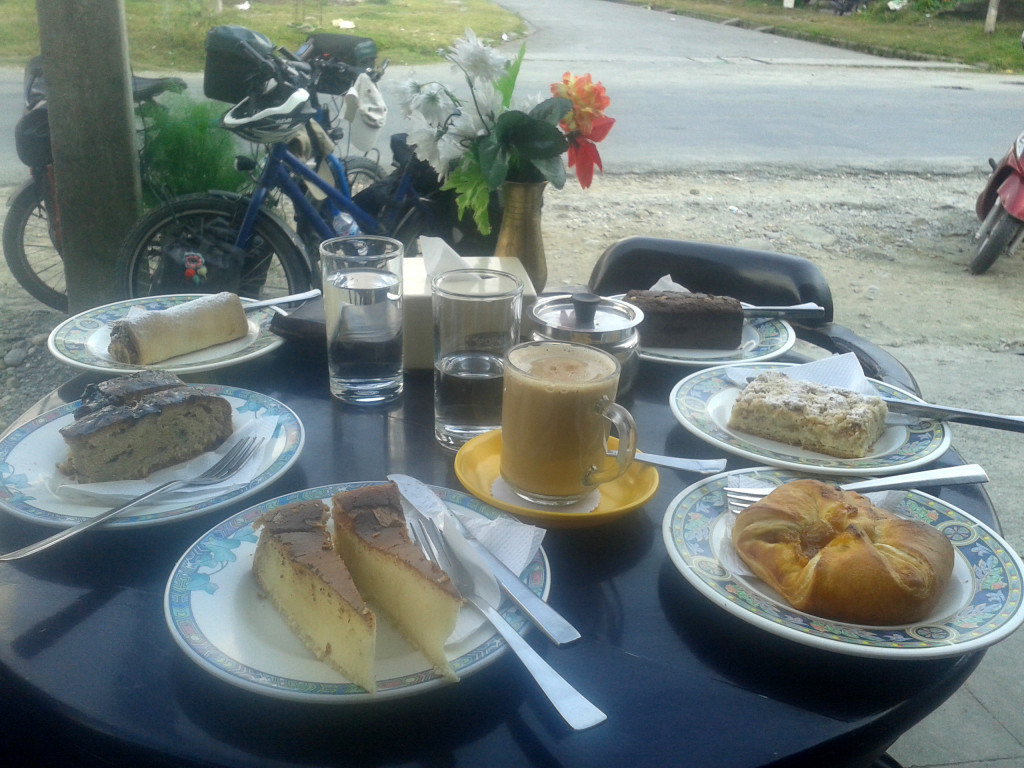
And we find out that the border crossing from Sikkim to Tibet is only open for Indians and Nepali and not for tourists. However, we want to stick to our plan to go to Tibet. Two reasons: According to other travelers the route via Myanmar is expensive. Not only do you need a visa, but also permits and you have to stay in guesthouses, because camping and staying in monasteries apparently is not allowed and prosecuted. The guesthouses, however, are 30 dollars and above. So we want to avoid this and instead enjoy the mountains of Tibet. Cora doesn’t like the hot and humid climate anyway and we both liked the mountains of Tajikistan and Kyrgyzstan. So why not cycle from Kathmandu to Tibet and via Lhasa towards Laos, totally avoiding Myanmar? Sounds all good and with this in mind we leave Pokhara and set off for Kathmandu.
Soon after leaving Pokhara it feels like waking up in another country. Everything is back to normal. No more tourists. Time for some good old Dal Bhat. It is going down most of the time and we make it to Dumre the first day. The next day we follow a turquoise mountain river and take a small break to swim in it.
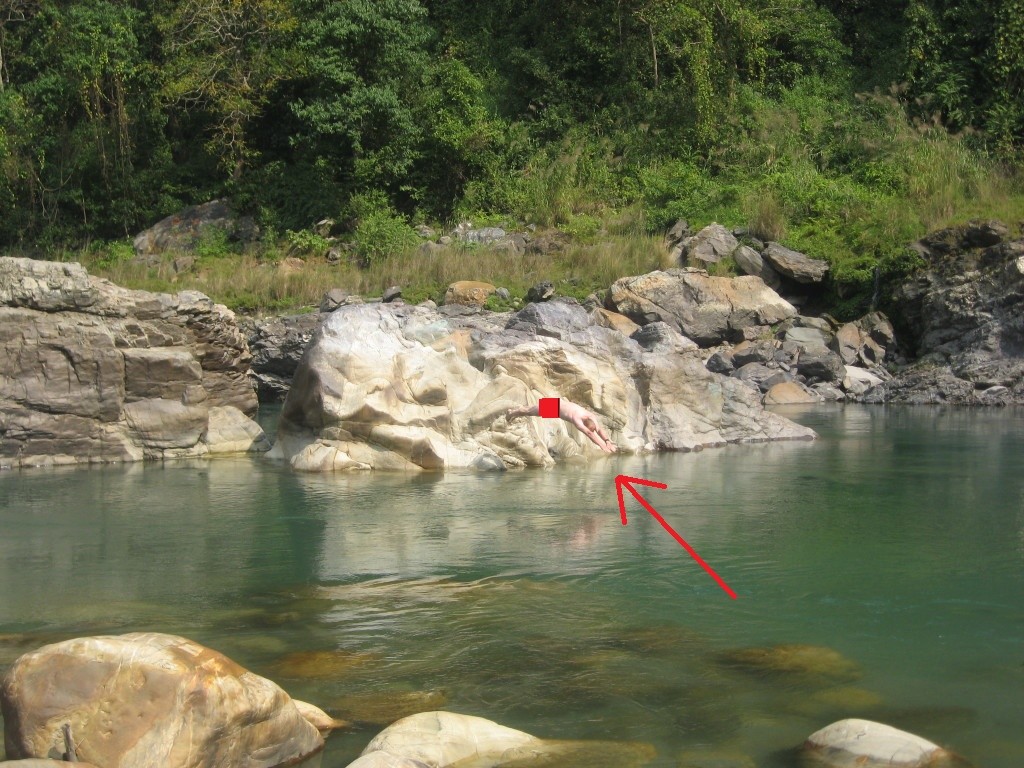
The third day we make it to the top of the pass before Kathmandu and it is already getting dark. Out of nowhere another cyclist passes us. He is Nepali and just on his way back from work. He invites us to his home on the hill just above Kathmandu. We spend a very pleasant evening with Antony and his wife Miru. For the first time we see the actual effect of the earthquake: He leads us to the forth floor of his house. Nepali have very narrow, but tall houses. A bit like in the Netherlands. One of the walls is missing. During the earthquake it collapsed, fell down and destroyed parts of his neighbor’s house. Luckily nobody got injured. Antony is a real cyclist. He is working in a mine 20 km away, but usually rides the bicycle to work. He also likes running. He tells us about the Annapurna-Circuit, a trekking path which goes around the Annapurna mountain range. He took part in a running race along this 200 km trek. He also says the road from Kathmandu to Tibet is closed due to a landslide, but an alternate route has just opened 3 weeks ago. Good news for us, so we can make it to Tibet and according to Antony this is an even more beautiful road than the usual highway.
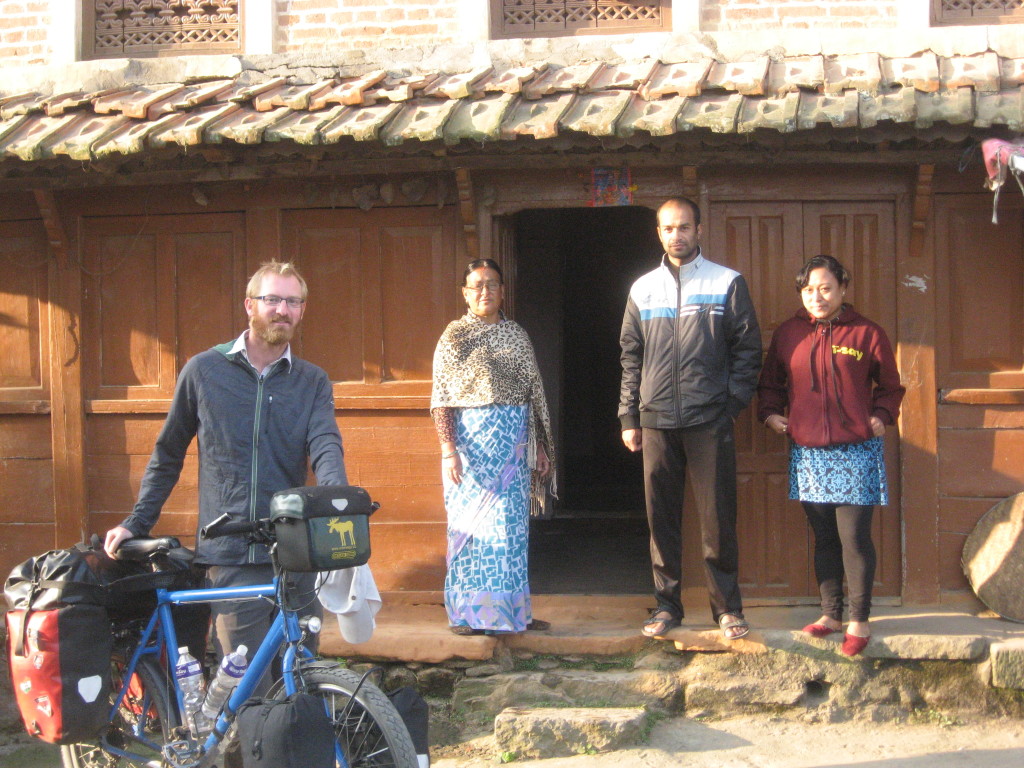
The next day we roll downhill to Kathmandu and find a hotel in Thamel district, which is even more touristic than Pokhara. Then we go to the Chinese embassy to get the visa. We get the application form, the guy tells us it only takes 4 days to issue the visa. Good for us, enough time to get a permit for Tibet. I just want to ask someone if we need to get the Tibet permit first in order to get the Chinese visa, because we cross from Nepal directly to Tibet. A very friendly guy who had helped us before asks me how we want to enter China. I tell him with the bicycle via the alternate road that has just opened. He explains, that this road is not for tourists, not even for Nepali. It has been opened in order to get petrol from China, since India stopped the petrol delivery. That’s why everybody knows about this alternate road. It has been in the news. People have seen the trucks crossing the border, finally bringing at least some petrol to Nepal again. So we are standing in the Chinese embassy with the filled out visa application, but now all hope is lost. We haven’t seen the mountains around Pokhara. We haven’t done the Everest base camp trek or any other trekking. We won’t see Tibet, we have to go through Myanmar. We are now in Kathmandu only a few hundred kilometers away from India. We have spent 4 weeks in Nepal and haven’t even seen any mountain, while we were surrounded by the highest mountains in the world. We are both not content with this situation, because for the first time we have the feeling of leaving a country without really having seen it. I mean you can skip bungee jumping, but you cannot miss the essential part of Nepal: The Himalaya.
We now have to wait another 5 days, because there is the Tihar festival in Nepal right now, so all embassies and other offices are closed. The streets are full of people dressed in genuine, traditional dresses. They play music, sing songs, dance all night long and every shop owner puts some flowers on his door and most do very beautiful mandalas in front of their entrances.
Since we didn’t take the chance to see the Himalaya in Nepal, we promise ourselves to at least do a really good tour through Sikkim and use the rest of the time in Kathmandu to plan this trip. We don’t want to be unprepared again. We organize a lot in Kathmandu and one afternoon find ourselves in a little roof top restaurant. Again we talk about the mountains of Nepal while eating our mo:mos and suddenly, we look at each other and within seconds we realize, that we cannot leave Nepal yet. We have to do something big. Something as big as the mountains. So we agree to face another monster, another legend. We decide to do the Annapurna-Circuit trek. By bicycle!
We pay the bill, write an email to Didier and Kyla, two American cyclists we met several days ago. They just returned from the Annapurna Circuit. We discuss the route, the difficulties and they say they definitely don’t recommend cycling the Annapurna-Circuit. „It is not going to be easy. You have to know that!“, they say. But we are already determined to do it. The next day we extend the Nepalese visa and get a bus ticket back to Dumre, because we don’t want to lose three more days cycling back to where we have been a week ago.
We have changed plans many times within the last three weeks and finally decided to spend the next 10 days on the most unpleasant trek you can probably do with a touring bicycle. I guess the writings on the wall were right: „Pleasure is a sign of personality incompleteness. Change is the only constant“.

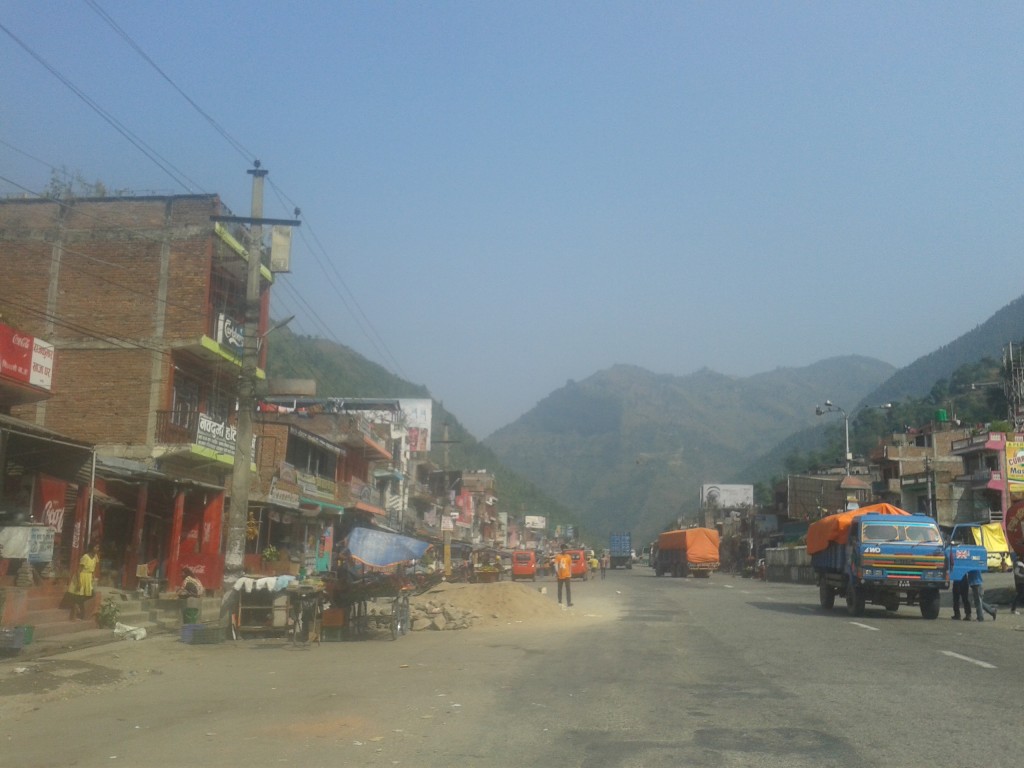
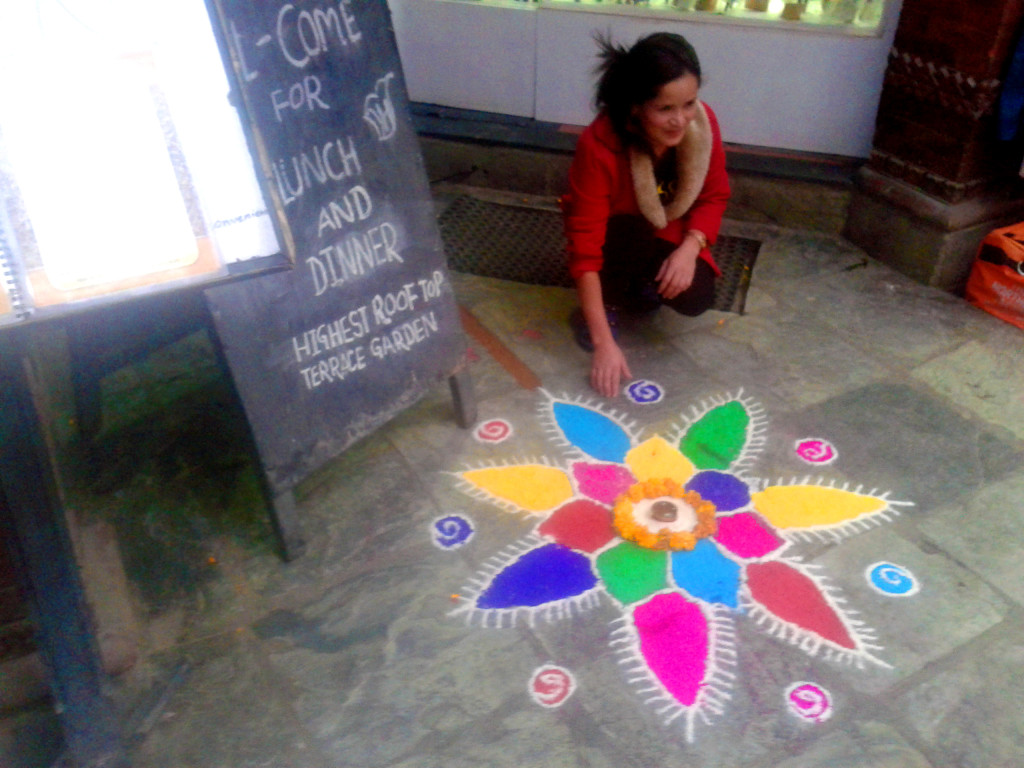
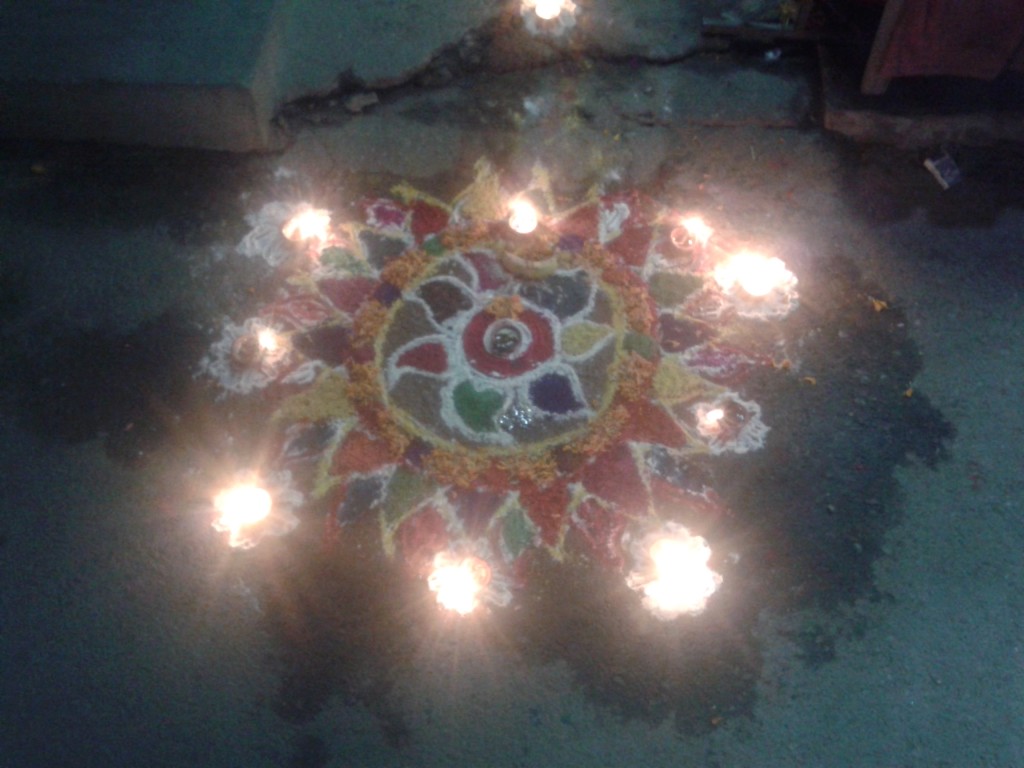
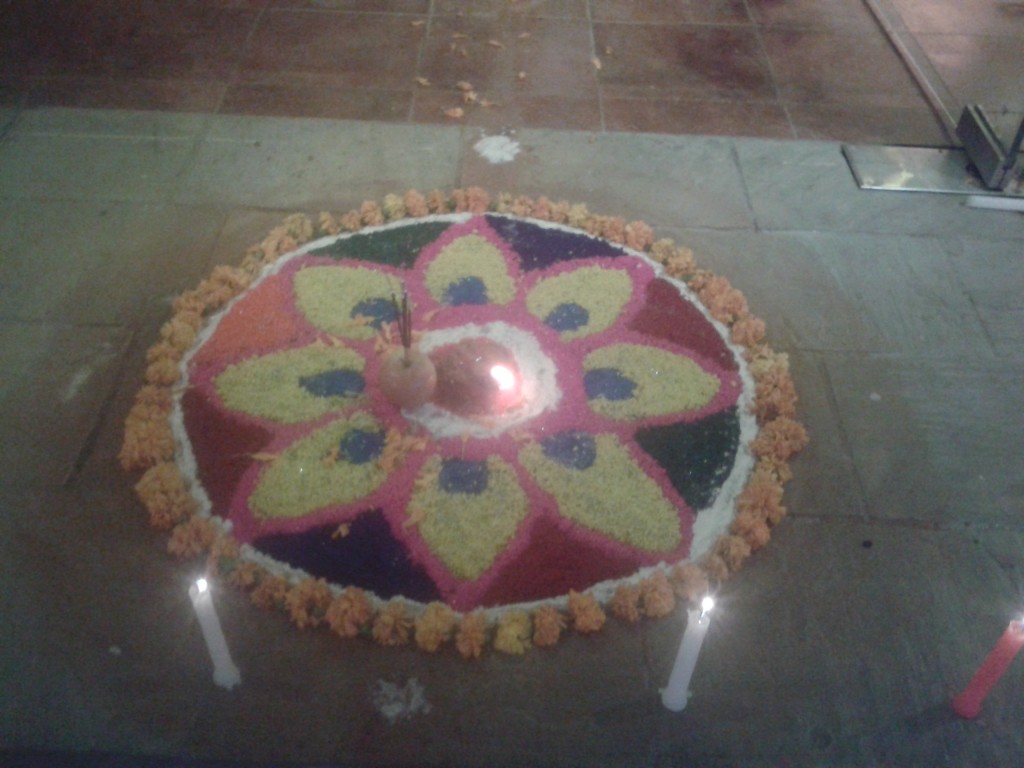
WOW, brandnew „red“ shorts and perfect body control and posture….
Was kannst Du eigentlich nicht lieber Wolgang 😉